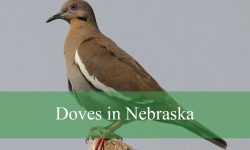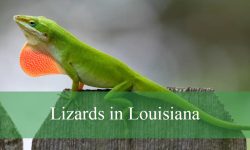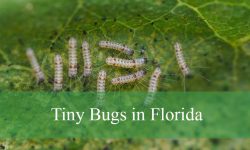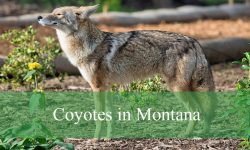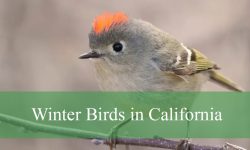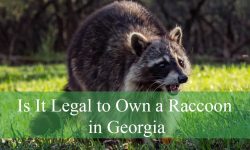Pennsylvania offers excellent opportunities to observe a few remarkable hummingbird species during the warmer months and fall migration. While only one species is a regular breeder, the state occasionally hosts rare western visitors, making it an exciting place for hummingbird enthusiasts. Knowing how to identify hummingbirds in Pennsylvania can enhance your birdwatching experience and help you welcome these vibrant birds to your garden.
The Ruby-throated Hummingbird is the only hummingbird that breeds in Pennsylvania and is by far the most common. However, keen observers have also recorded rare appearances of the Rufous Hummingbird and the Calliope Hummingbird, particularly during migration. Each species has distinct features, colors, and behaviors that make them fascinating to watch.
This article highlights 3 hummingbirds in Pennsylvania, with detailed identification tips, descriptions of their habits, and where you’re most likely to see them. Even in backyards or city parks, the sudden zip of wings or flash of color could be a hummingbird stopping by.
Common Hummingbirds Found in Pennsylvania
Ruby-throated Hummingbird (Archilochus colubris)
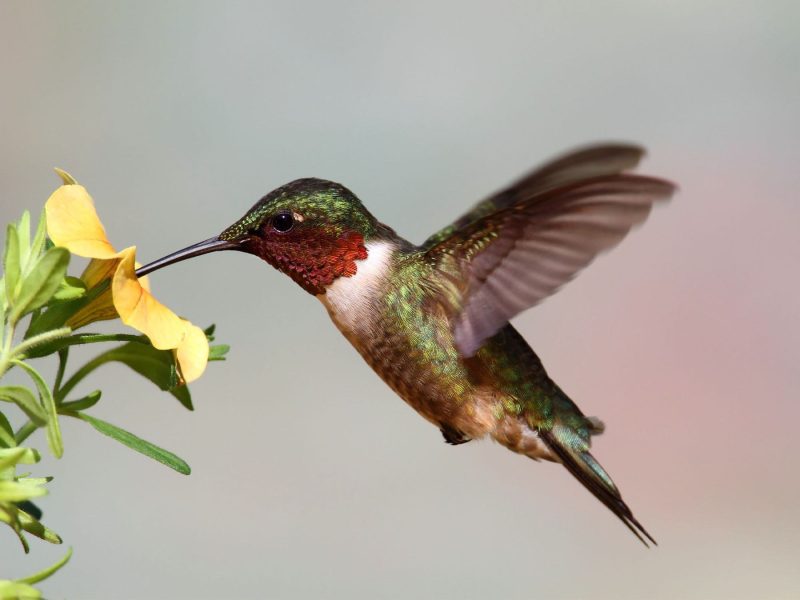
The Ruby-throated Hummingbird is the most widespread and only regularly breeding hummingbird species in Pennsylvania. Adult males are easily identified by their iridescent ruby-red throat patch, called a gorget, which glows vibrantly under sunlight. Their upperparts are metallic green, and their underparts are white. Females lack the bright red throat and instead display a white or slightly streaked grayish throat, with a green back and buffy sides. Both sexes have long, slender bills that curve slightly downward, ideal for feeding on tubular flowers.
These hummingbirds are tiny but energetic, measuring about 3 to 3.5 inches (7.5 to 9 cm) long and weighing only 2 to 6 grams. Despite their small size, they are known for their rapid wingbeats (about 50–80 beats per second) and ability to hover in mid-air or fly in any direction, including backward. During the breeding season, males perform aerial displays to attract females, zooming in broad U-shaped loops and producing buzzing sounds with their wings.
Ruby-throated Hummingbirds feed primarily on nectar from brightly colored, trumpet-shaped flowers such as bee balm, trumpet creeper, columbine, and jewelweed. They also consume small insects and spiders to obtain essential proteins, especially during nesting. In suburban areas and gardens, they readily visit sugar-water feeders (a mixture of 1 part sugar to 4 parts water, with no red dye). They fiercely defend their feeding territories, especially during peak nectar season.
In Pennsylvania, this species arrives by late April and remains until early October, migrating south to Central America for the winter. They are commonly found in woodland edges, meadows, gardens, parks, and along rivers or streams, particularly where flowers and feeders are abundant. During migration, they can even be seen in urban areas as they refuel for their long flight across the Gulf of Mexico. Their adaptability and attraction to feeders make them a favorite among backyard birdwatchers across the state.
Rufous Hummingbird (Selasphorus rufus)
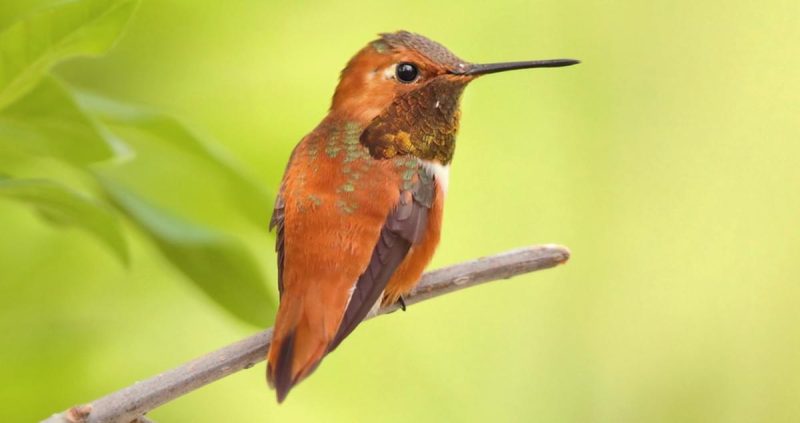
The Rufous Hummingbird is a rare but increasingly observed migratory visitor in Pennsylvania, mostly appearing in late fall and winter. Males are distinguished by their vivid rufous-orange body and bright red-orange gorget. They also have green on the back or crown in some individuals. Females are green-backed with rust-colored flanks, white underparts, and occasional rufous spotting in the tail. Their coloration often overlaps with Allen’s Hummingbird, making identification tricky without detailed observation or banding.
This species is slightly smaller than the Ruby-throated, averaging 2.8 to 3.5 inches (7 to 9 cm) in length and weighing between 2 to 5 grams. What sets the Rufous Hummingbird apart is its exceptional aggressiveness—it is known as one of the most territorial of all North American hummingbirds. Males will chase away other hummingbirds, bees, and even larger birds from feeders or nectar sources.
Their diet consists of flower nectar, especially from native plants like honeysuckle, salvia, and cardinal flower. They also eat tiny insects and larvae caught in mid-air or gathered from foliage. Rufous Hummingbirds readily adapt to hummingbird feeders, particularly during migration when they need energy-rich food to fuel their journey. In Pennsylvania, sightings often spike around October to December, particularly in southern and southeastern parts of the state.
While not native breeders in Pennsylvania, Rufous Hummingbirds are being recorded more frequently, likely due to shifts in migratory patterns or climate influences. Birders and researchers often report sightings in backyards, suburban gardens, and even rural feeders, especially when late-season flowering plants or feeders are available. Sightings should be reported to local birding networks or eBird, as these visits are of scientific interest and conservation value.
Calliope Hummingbird (Selasphorus calliope)
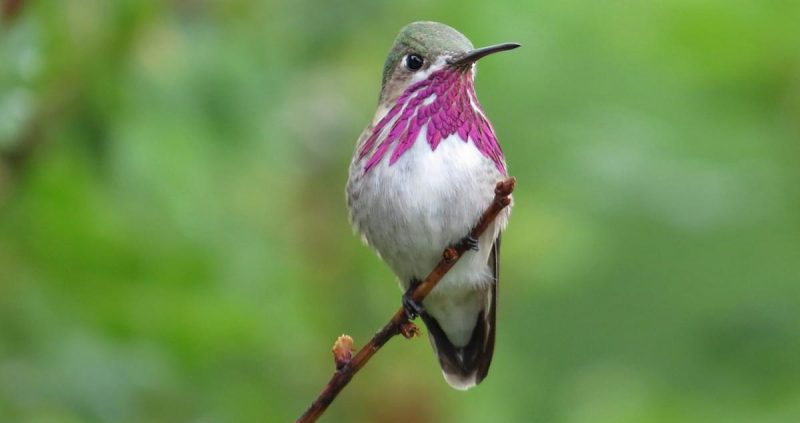
The Calliope Hummingbird is the smallest bird species in the United States and an occasional, very rare visitor to Pennsylvania. Males have an unmistakable throat with magenta streaks that flare outward, giving them a distinctive whiskered appearance. Their upperparts are metallic green, and their underparts are pale whitish. Females and juveniles are less colorful, with a plain white throat, green back, and peach-tinted flanks. Because of their size and subtle markings, they can easily be confused with juvenile Ruby-throated Hummingbirds.
These birds measure only 2.8 to 3.3 inches (7 to 8.5 cm) long and weigh a mere 2.3 to 3.4 grams, making them smaller than many large insects. Despite their size, Calliope Hummingbirds are remarkable long-distance migrants, traveling over 5,000 miles from their breeding grounds in the northwestern U.S. and Canada to their wintering areas in Mexico. Their flight style is more fluttery and less direct than Ruby-throated or Rufous Hummingbirds.
Calliope Hummingbirds feed primarily on nectar from small, tubular flowers and occasionally on small insects and spiders. They are known to visit hummingbird feeders during migration, though their tiny size often puts them at a disadvantage when competing with more aggressive species. Because of this, when Calliope Hummingbirds are spotted in Pennsylvania, they are often seen in quiet suburban yards or wooded backyards where there is less competition.
Although they do not breed in the eastern U.S., a few individuals have been documented in Pennsylvania, mostly during late fall and early winter, similar to Rufous Hummingbirds. These sightings are typically associated with out-of-range migration, and most records come from the southern part of the state, especially in areas where feeders remain up into the cooler months. Observers lucky enough to see a Calliope should document the bird carefully, as these occurrences are of high interest to ornithologists and birders alike.
How to Attract Hummingbirds in Pennsylvania
Attracting hummingbirds in Pennsylvania requires a combination of flowering plants, feeders, water sources, and shelter that mimic their natural habitat and provide abundant food. Since the Ruby-throated Hummingbird is the most common species in the state, most strategies will appeal especially to them, though rare visitors like Rufous or Calliope Hummingbirds may also stop by during migration if conditions are right. Providing a continuous source of nectar from spring through early fall ensures that these tiny birds have a reason to visit your yard and possibly return every year.
The most effective way to attract hummingbirds is by planting native, nectar-rich flowers in a variety of shapes and bloom times. Bright red, orange, and pink tubular flowers such as bee balm (Monarda), trumpet honeysuckle (Lonicera sempervirens), cardinal flower (Lobelia cardinalis), and columbine (Aquilegia) are especially appealing to hummingbirds. Grouping plants together in clusters helps birds spot them from a distance, and staggered blooming periods ensure nectar availability throughout the season. Avoid pesticides, as these can kill the insects hummingbirds rely on for protein.
In addition to flowers, you can supplement natural nectar with sugar-water feeders. Use a simple solution of 1 part white sugar to 4 parts water, and never add red dye, which can be harmful. Hang feeders in a shady spot near flowers, trees, or shrubs, and keep them clean by washing them with hot water at least every 3–4 days—or more often in hot weather. Providing multiple feeders spaced apart helps reduce aggressive territorial behavior among the birds, especially during peak migration.
To complete a hummingbird-friendly habitat, offer safe perching spots, water features, and shelter. Hummingbirds often perch on small bare branches between feedings. Incorporating native trees and shrubs into your landscape provides roosting and nesting sites. While hummingbirds rarely use birdbaths, they enjoy misting water from a fine spray or a gentle fountain. Maintaining a quiet, chemical-free yard filled with color, motion, and food will create a welcoming haven for Pennsylvania’s hummingbirds—and potentially attract rare vagrant species during migration.
FAQ About Hummingbirds in Pennsylvania
What types of hummingbirds are found in Pennsylvania?
The most common and widespread hummingbird in Pennsylvania is the Ruby-throated Hummingbird, which breeds throughout the state. Other species like the Rufous, Calliope, Black-chinned, Anna’s, Allen’s, and even Bahama Woodstar have been rarely recorded, typically as migratory vagrants during late fall or winter.
When do hummingbirds arrive in Pennsylvania?
Ruby-throated Hummingbirds typically arrive in Pennsylvania in late April or early May, depending on the weather. Males usually arrive a few days before females to establish territory. These birds remain in the state through early October, after which they begin migrating south.
How can I attract hummingbirds to my backyard in Pennsylvania?
You can attract hummingbirds by planting nectar-rich native flowers such as bee balm, columbine, and cardinal flower. Hanging sugar-water feeders (1 part sugar to 4 parts water, no red dye) will supplement their diet. Providing perches, water misters, and shelter from trees and shrubs also makes your yard more inviting.
Do hummingbirds nest in Pennsylvania?
Yes. The Ruby-throated Hummingbird is the only species that nests in Pennsylvania. Females build tiny cup-shaped nests on tree branches, often using spider silk, moss, and lichen. They typically lay 2 eggs per clutch, and nesting can occur from May through July.
What do hummingbirds eat besides nectar?
In addition to flower nectar and sugar-water, hummingbirds feed on tiny insects and spiders, which are vital sources of protein, especially during nesting. They catch gnats, fruit flies, and aphids in mid-air or pick them off leaves and bark.
Are hummingbirds territorial in Pennsylvania?
Yes. Especially during breeding season and peak feeding times, male hummingbirds can be very territorial. They often chase away rivals from flowers and feeders. To minimize conflict, hang multiple feeders several feet apart to allow more birds to feed peacefully.
When should I take down hummingbird feeders in Pennsylvania?
Feeders can typically be taken down in mid-October, after the last migrating Ruby-throated Hummingbirds have passed through. However, leaving feeders up into late fall may help rare migrating species like Rufous Hummingbirds, so some birders keep them up until early November, especially in southern parts of the state.

